If you want to boost your machine learning skills in 2025, I recommend exploring a mix of foundational, practical, and ethical books. They cover math essentials, causal inference, hands-on tools, and AI ethics—all critical for real-world success. These books help bridge theory and application, making complex ideas clear. Keep exploring, and you’ll find plenty of insights to advance your expertise and understand current and future trends.
Key Takeaways
- Include foundational books like *Mathematics of Machine Learning* for rigorous understanding of core concepts.
- Highlight practical guides such as *Hands-On Machine Learning* for applying algorithms with real-world tools.
- Consider beginner-friendly titles like *Master AI for Beginners* to build fundamental knowledge responsibly.
- Incorporate specialized books on causal inference and deployment to enhance system robustness and scalability.
- Use concise overviews like *The Hundred-Page Machine Learning Book* for quick refreshers and targeted learning.
Mathematics of Machine Learning Book
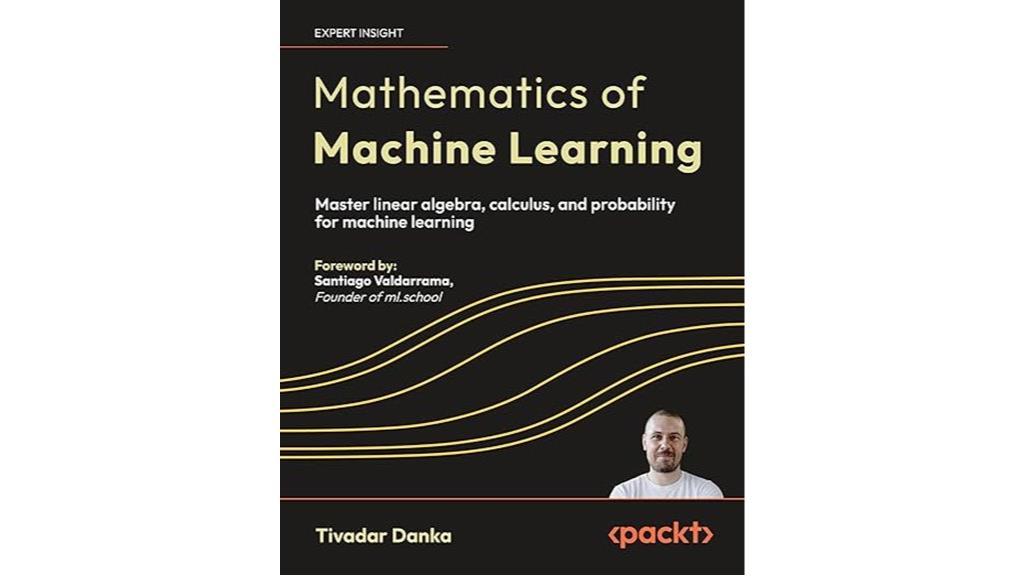
If you’re looking for a book that bridges theory and practice in the mathematical foundations of machine learning, *Mathematics of Machine Learning* by Tivadar Danka stands out. I found it incredibly clear and rigorous, balancing abstract concepts with practical applications. It covers linear algebra, calculus, and probability, showing how these map directly to real ML decisions. The inclusion of Python code and Jupyter notebooks makes complex ideas tangible. I appreciate how it emphasizes building intuition alongside proofs, helping me understand algorithms deeply. Whether you’re a data scientist or ML engineer, this book enhances your ability to debug, optimize, and innovate with solid mathematical insights.
Best For: data scientists, ML engineers, and developers seeking a rigorous yet practical understanding of the mathematical foundations of machine learning.
Pros:
- Clear and balanced approach that combines theory with practical Python examples and Jupyter notebooks
- Covers essential mathematical concepts like linear algebra, calculus, and probability with intuitive explanations
- Enhances understanding of algorithms, decision-making, and model optimization for real-world applications
Cons:
- Initial definitions can be dense and may lack sufficient intuition for beginners unfamiliar with formal terminology
- Some visual aids, such as density plots, could benefit from better quality and color-coding for clarity
- The physical binding of the book may not be durable enough for frequent use in intensive study environments
Causal Inference and Discovery in Python
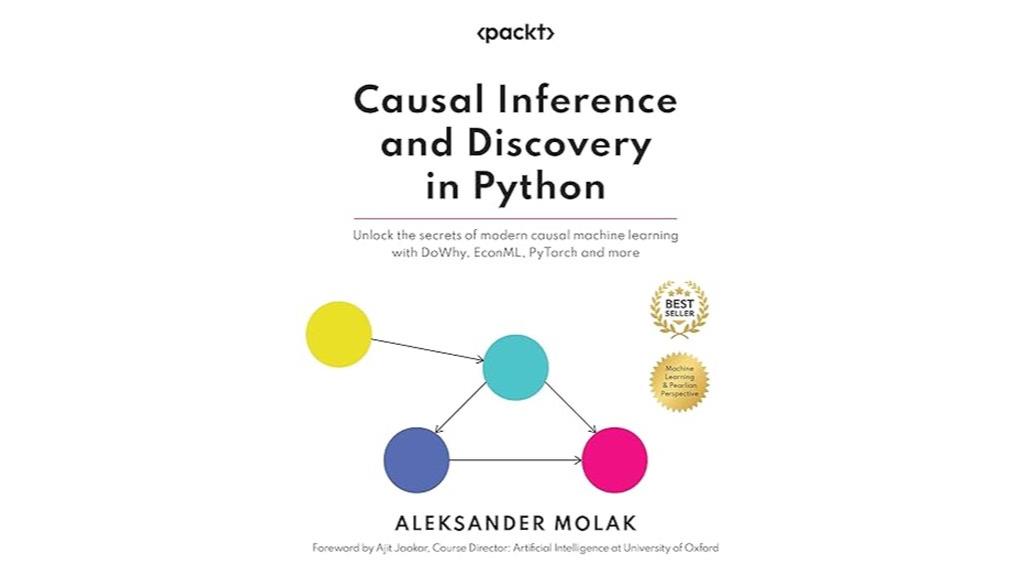
Causal Inference and Discovery in Python stands out as a top choice for data scientists and researchers enthusiastic to bridge theory and practice in causal analysis. I find this book invaluable for understanding causality concepts like counterfactuals and causal discovery, with practical examples using libraries like DoWhy, EconML, gCastle, and Causica. It offers clear explanations of complex ideas from Pearlian and machine learning perspectives, emphasizing real-world application. Whether you’re a seasoned analyst or starting out, the hands-on exercises and code snippets help solidify your skills. While some topics may challenge beginners, it’s an excellent resource to deepen your understanding of causal inference in Python.
Best For: data scientists, researchers, and analysts seeking a practical, hands-on guide to causal inference in Python that bridges theory and real-world application.
Pros:
- Clear explanations of complex causal concepts from Pearlian and machine learning perspectives
- Extensive practical exercises with code snippets using libraries like DoWhy, EconML, gCastle, and Causica
- Suitable for both intermediate and advanced users looking to deepen their understanding of causal discovery and analysis
Cons:
- May be challenging for complete beginners without prior Python or data science experience
- Some topics such as genomics or high-dimensional interventions are not covered in depth, limiting scope for specialized research
- Technical issues like formula rendering on Kindle can affect the reading experience but do not impact core content
Master AI for Beginners: Develop AI Basics and Machine Learning
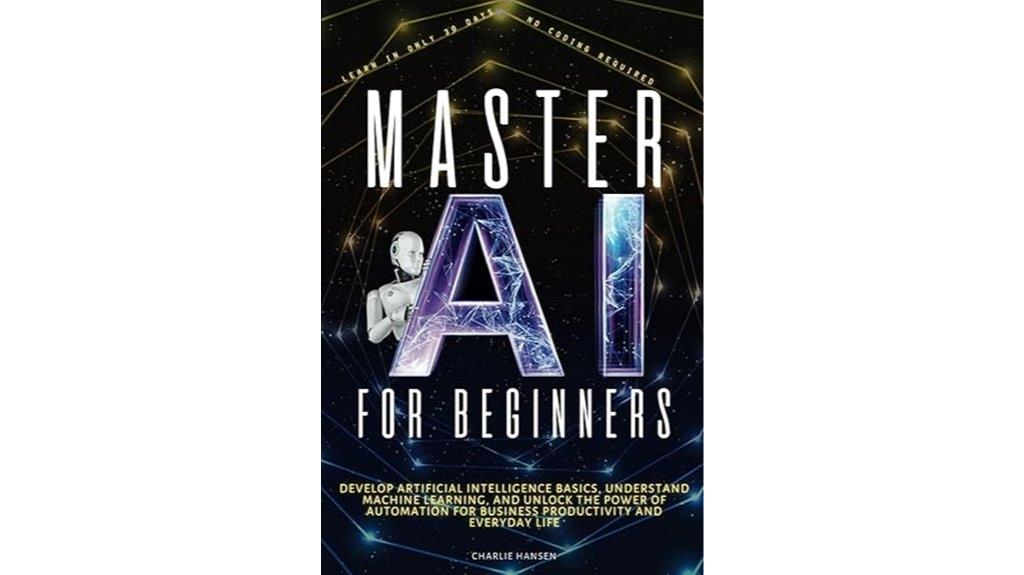
Master AI for Beginners: Develop AI Basics and Machine Learning stands out as an ideal resource for newcomers enthusiastic to grasp the fundamentals of artificial intelligence without prior technical experience. It offers a clear, accessible introduction to AI, explaining how it works, its practical benefits, and future potential. The book covers core concepts like machine learning, deep learning, and algorithms, illustrated through real-world applications in healthcare, mental health, and business. It encourages curiosity, experimentation, and responsible use, helping readers see AI as a tool for innovation, productivity, and personal growth. This guide empowers beginners to start their AI journey confidently and practically.
Best For: Beginners and enthusiasts interested in understanding the fundamentals of AI and machine learning without prior technical experience.
Pros:
- Provides clear, accessible explanations suitable for newcomers
- Covers a wide range of core concepts and real-world applications
- Encourages practical experimentation and responsible AI use
Cons:
- Some sections may require rereading or additional resources for full understanding
- Lacks in-depth technical details for advanced learners
- Focuses more on foundational knowledge, which may limit coverage of complex topics
Hands-On Machine Learning with Scikit-Learn, Keras, and TensorFlow
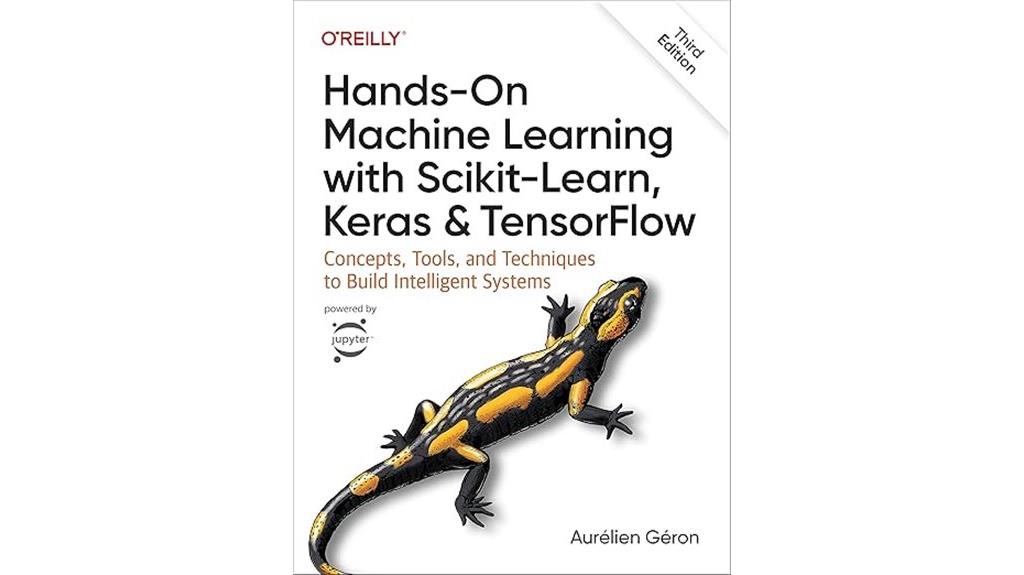
Hands-On Machine Learning with Scikit-Learn, Keras, and TensorFlow stands out as an ideal choice for beginners and practitioners seeking practical, hands-on experience in machine learning and AI. I appreciate how it balances theory with real-world applications, starting with accessible examples and gradually introducing algorithms. The exercises are challenging yet rewarding, encouraging deep understanding and confidence. It covers supervised and unsupervised learning, deep learning, and neural networks, making it exhaustive. The book’s approachability, detailed explanations, and focus on tools like TensorFlow and Keras make it a valuable resource, especially for those looking to build practical skills for projects and research.
Best For: Beginners and practitioners seeking practical, hands-on experience in machine learning and AI with a balanced approach to theory and application.
Pros:
- Provides comprehensive coverage of supervised, unsupervised, and deep learning methods.
- Emphasizes practical exercises that reinforce understanding and build confidence.
- Uses accessible explanations and real-world examples suitable for those with limited prior knowledge.
Cons:
- Some readers may find the dense text formatting or print quality variable depending on the seller.
- Focuses heavily on TensorFlow and Keras, requiring supplementary learning for those interested in frameworks like PyTorch or platforms like AWS.
- May not delve deeply into highly technical algorithmic proofs, which could be a limitation for advanced theoreticians.
The Hundred-Page Machine Learning Book (The Hundred-Page Books)
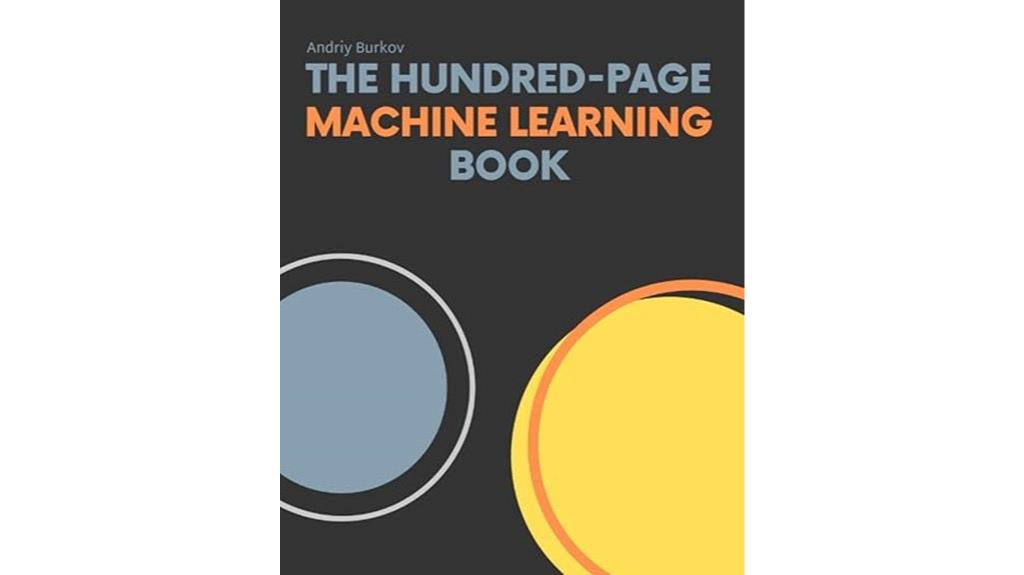
If you’re looking for a quick yet all-encompassing introduction to machine learning, The Hundred-Page Machine Learning Book by Andriy Burkov is an excellent choice. It distills core concepts like supervised and unsupervised learning, neural networks, and model evaluation into about 100 pages. The book balances mathematical intuition with practical advice, making complex ideas accessible without sacrificing depth. It covers algorithms, feature engineering, and best practices, serving as both a beginner’s guide and a handy reference. With clear explanations and links to further resources, it’s perfect for those who want a solid overview and a springboard for deeper learning.
Best For: beginners and professionals seeking a concise, comprehensive overview of machine learning concepts and practical insights in an accessible format.
Pros:
- Clear, straightforward explanations suitable for readers with varying backgrounds
- Covers a broad range of core ML topics within approximately 100 pages
- Serves as an excellent quick reference and springboard for further learning
Cons:
- Some topics may lack in-depth detail for advanced practitioners
- Certain chapters could benefit from more elaboration on complex concepts
- The concise format might omit deeper mathematical explanations preferred by experts
Designing Machine Learning Systems
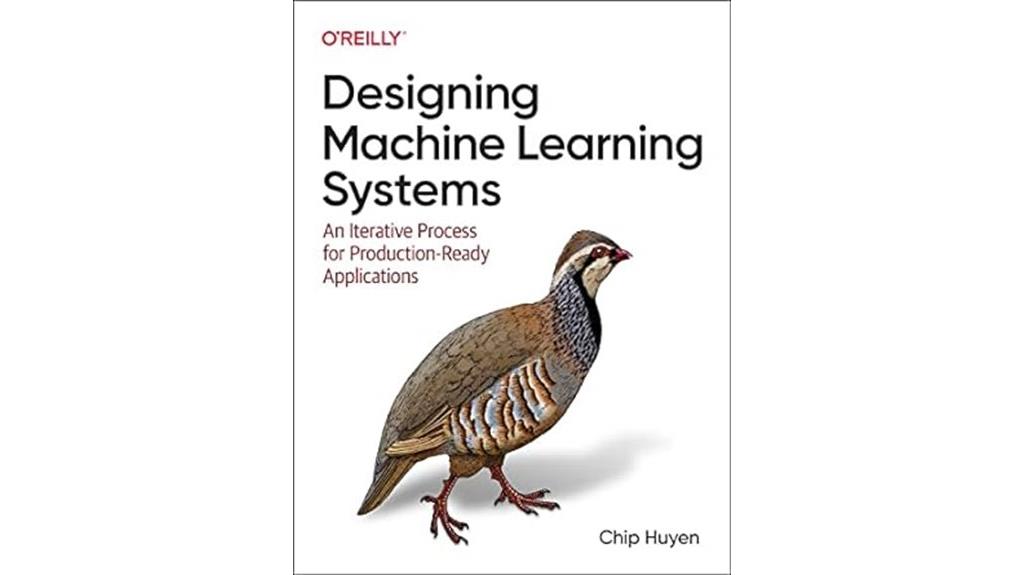
“Designing Machine Learning Systems” by Chip Huyen is an ideal resource for practitioners who want to bridge the gap between research and real-world deployment. I find it invaluable for understanding how to build scalable, reliable ML systems. The book emphasizes systems thinking, deployment strategies, monitoring, and iteration, offering practical insights from real-world case studies. It covers the entire ML lifecycle, focusing on robustness, maintainability, and operational excellence. Whether you’re a data scientist, engineer, or team leader, this book helps translate theory into actionable steps for productionizing models effectively. It’s a clear, systematic guide to making ML work at scale.
Best For: practitioners, data scientists, engineers, and team leaders seeking practical guidance on building, deploying, and maintaining reliable, scalable ML systems in production environments.
Pros:
- Provides comprehensive, systems-focused insights applicable to real-world ML deployment.
- Emphasizes practical strategies for robustness, monitoring, and operational excellence.
- Suitable for a wide audience from beginners to experienced professionals, including team mentoring.
Cons:
- The style can resemble blog posts, which may affect readability for some readers.
- References vary in quality, with some sourced from social media or informal blogs.
- The black-and-white print diminishes graphics, making some diagrams harder to interpret.
Machine Learning System Design Interview
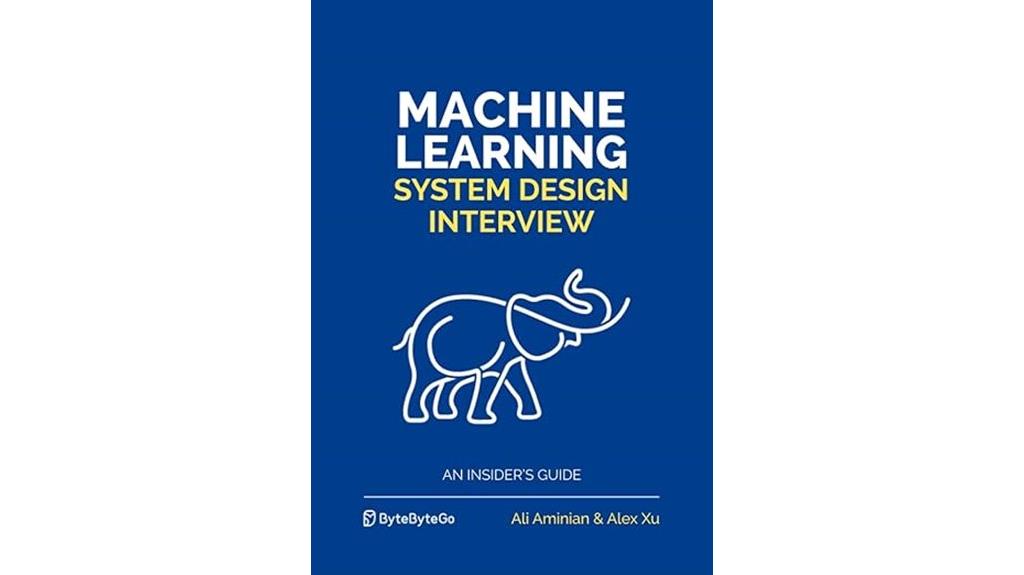
For early- to mid-career machine learning engineers preparing for system design interviews, this book offers a practical overview of how to approach ML system design questions. It provides a clear framework, emphasizing real-world examples like recommendation engines, search, and ad click prediction. The book balances technical concepts with practical tips on framing discussions, understanding trade-offs, and scaling systems. Its case studies and accessible explanations help build confidence for interviews at top tech firms. While it covers essential topics efficiently, it’s more suited for those with some ML background and may lack depth for advanced or senior-level roles. Still, it’s a valuable starting point for interview prep.
Best For: early- to mid-career ML engineers seeking practical guidance and high-level understanding of ML system design for interviews at top tech companies.
Pros:
- Offers a clear framework and practical case studies that help demystify complex ML system concepts.
- Emphasizes essential topics like trade-offs, scaling, and real-world application examples, boosting confidence for interviews.
- Well-organized with accessible explanations, making it easy for early-career professionals to grasp key ideas quickly.
Cons:
- Lacks depth in fundamental ML concepts and advanced technical topics, limiting usefulness for senior or specialized roles.
- Contains outdated content and superficial coverage of recent AI developments such as generative AI and language models.
- Poor formatting and repetitive content can hinder readability and detailed understanding of complex challenges.
Why Machines Learn: The Elegant Math Behind Modern AI
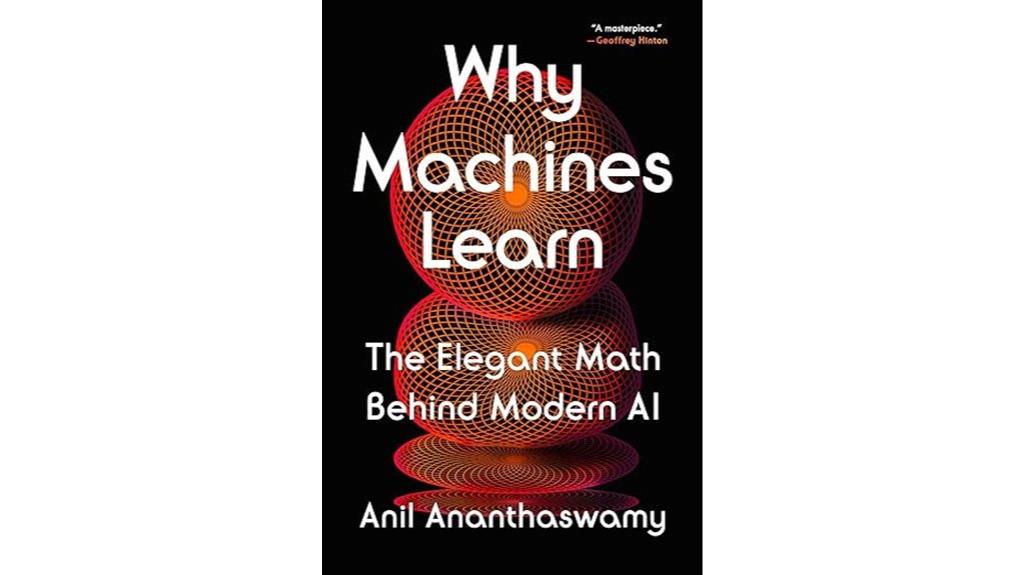
Why Machines Learn stands out as an ideal choice for readers who want to grasp the mathematical principles behind AI without getting lost in technical jargon. Anil Ananthaswamy’s book offers an accessible, engaging look at how core math—like linear algebra, probability, and optimization—drives modern AI systems. It explains complex ideas such as neural networks and gradient descent through intuitive storytelling, making these concepts understandable even for non-mathematicians. The focus is on clarity and real-world relevance, helping readers see the elegance behind AI’s algorithms. This book is perfect for those curious about the math that shapes intelligent machines, without requiring advanced calculus or linear algebra expertise.
Best For: readers interested in understanding the mathematical principles behind AI without needing advanced technical skills.
Pros:
- Accessible and engaging explanations of complex mathematical concepts.
- Blends storytelling with rigorous ideas, making learning enjoyable.
- Suitable for a wide audience including students, tech enthusiasts, and lifelong learners.
Cons:
- Occasional inconsistencies in notation can cause confusion.
- Limited coverage of the latest AI developments like transformers and ChatGPT.
- The ending may lack an optimistic outlook on AI’s future potential.
Machine Learning with PyTorch and Scikit-Learn: Develop Machine Learning and Deep Learning Models with Python
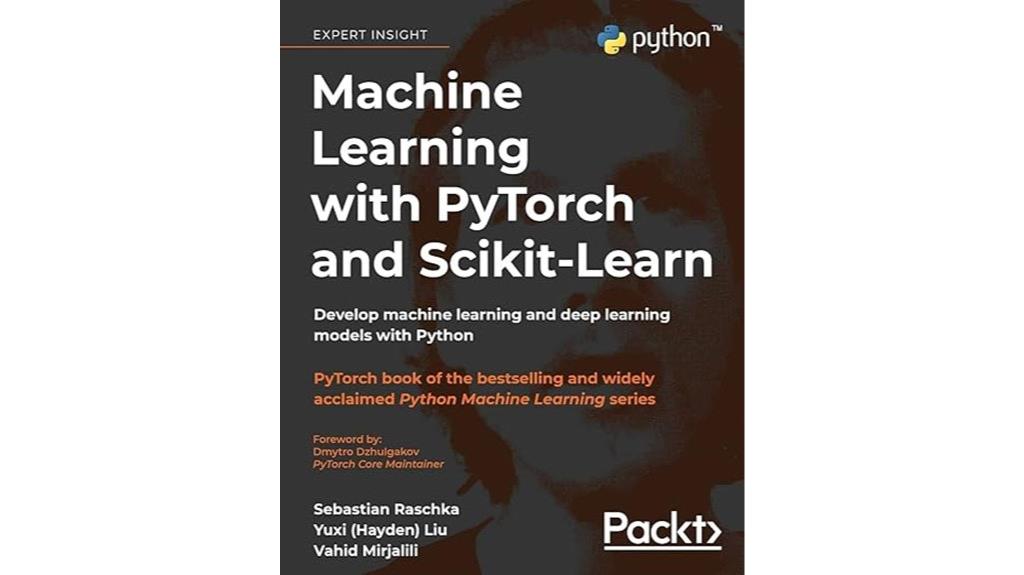
If you’re looking to build solid machine learning and deep learning skills with Python, “Machine Learning with PyTorch and Scikit-Learn” stands out as an essential resource. This all-encompassing guide covers both foundational concepts and advanced topics, making it suitable for learners at any level. I appreciate its practical focus, with clear explanations, extensive code examples, and a strong emphasis on experimentation. It guides you through model tuning, hyperparameter optimization, and cutting-edge techniques like transformers and autoencoders. Although some content may be slightly outdated, the book remains a valuable reference for mastering current ML trends and developing real-world models efficiently.
Best For: learners and practitioners seeking a comprehensive, practical guide to machine learning and deep learning using Python, PyTorch, and scikit-learn.
Pros:
- Clear explanations with extensive code examples that facilitate active learning and experimentation
- Covers a wide range of topics from basic concepts to advanced techniques like transformers and autoencoders
- Emphasizes model tuning, pipeline setup, and current ML trends, making it a valuable practical reference
Cons:
- Some content and package versions may be outdated, requiring updates or tweaks during implementation
- Limited discussion on the rationale behind architecture choices and specific algorithm selections
- Lacks examples of time series analysis, which could be relevant for certain applications
Principles To Practice Volume 2: Data Science and Ethics
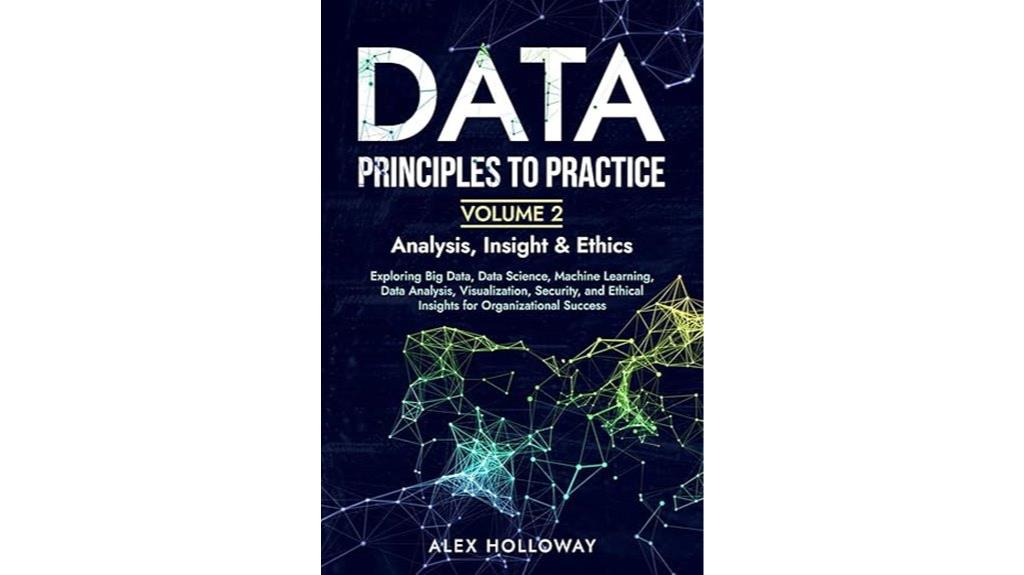
Principles To Practice Volume 2: Data Science and Ethics stands out as an essential resource for professionals and students seeking a thorough understanding of responsible data handling and ethical considerations in machine learning. It offers a balanced exploration of big data, analytics, and AI, blending technical insights with real-world applications. The book emphasizes ethical data use, privacy, security, and transparency, helping readers navigate challenges in digital transformation. Its case studies and visualization techniques improve communication skills, making complex concepts accessible. Whether you’re new or experienced, this book equips you to leverage data responsibly, aligning strategic goals with ethical standards in today’s data-driven landscape.
Best For: professionals, students, and business leaders seeking a comprehensive and accessible guide to responsible data science, ethics, and analytics in today’s digital landscape.
Pros:
- Balances technical depth with practical insights and real-world case studies.
- Emphasizes ethical considerations, privacy, and security, promoting responsible data use.
- Enhances communication skills through visualization techniques for better stakeholder engagement.
Cons:
- Minor formatting issues may affect readability for some users.
- The breadth of topics might be overwhelming for complete beginners without prior technical background.
- Some readers may desire more in-depth coverage of advanced machine learning algorithms.
Conversations with ChatGPT: Exploring Artificial Intelligence and Future Tech
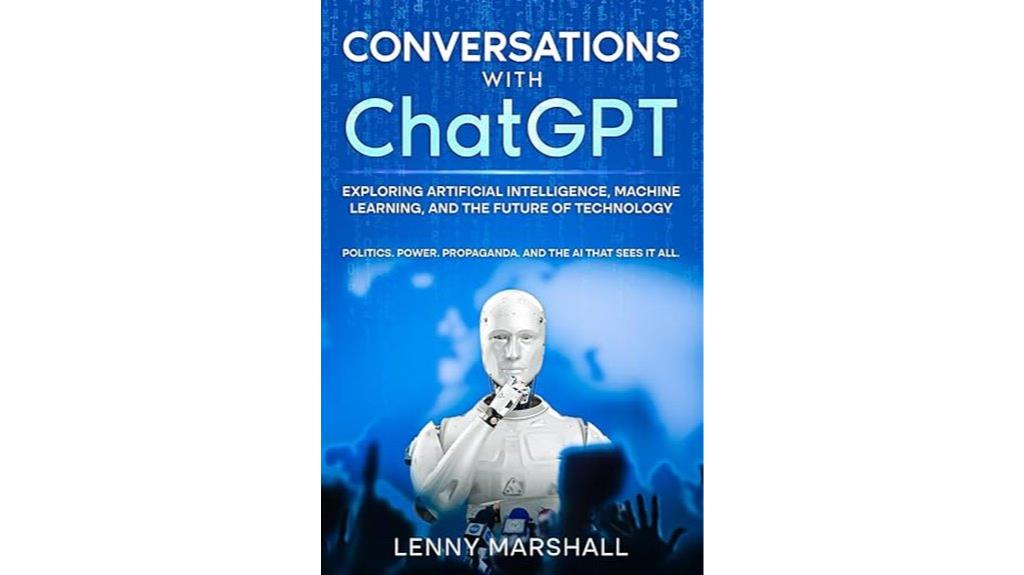
Curious about how artificial intelligence is shaping our future? *Conversations with ChatGPT: Exploring Artificial Intelligence and Future Tech* is an excellent starting point for anyone keen to understand AI’s practical and societal impacts. It clarifies complex concepts in AI and machine learning, making them accessible even for those with a tech background. The book explores AI’s influence on industries like healthcare, finance, and education, highlighting its transformative potential. It also addresses common misconceptions, safety concerns, and ethical questions, offering a balanced view. I found it insightful and engaging, perfect for anyone wanting to deepen their understanding of AI’s evolving role in our lives.
Best For: readers interested in understanding AI’s practical applications, societal impacts, and ethical considerations, whether they have a technical background or not.
Pros:
- Provides clear explanations of complex AI and machine learning concepts
- Covers a wide range of applications across industries and everyday life
- Offers a balanced discussion on AI benefits, risks, and ethical issues
Cons:
- May oversimplify some technical details for advanced readers
- Focuses primarily on general concepts rather than in-depth technical methodologies
- Could benefit from more case studies or real-world examples to illustrate applications
The StatQuest Illustrated Guide To Machine Learning
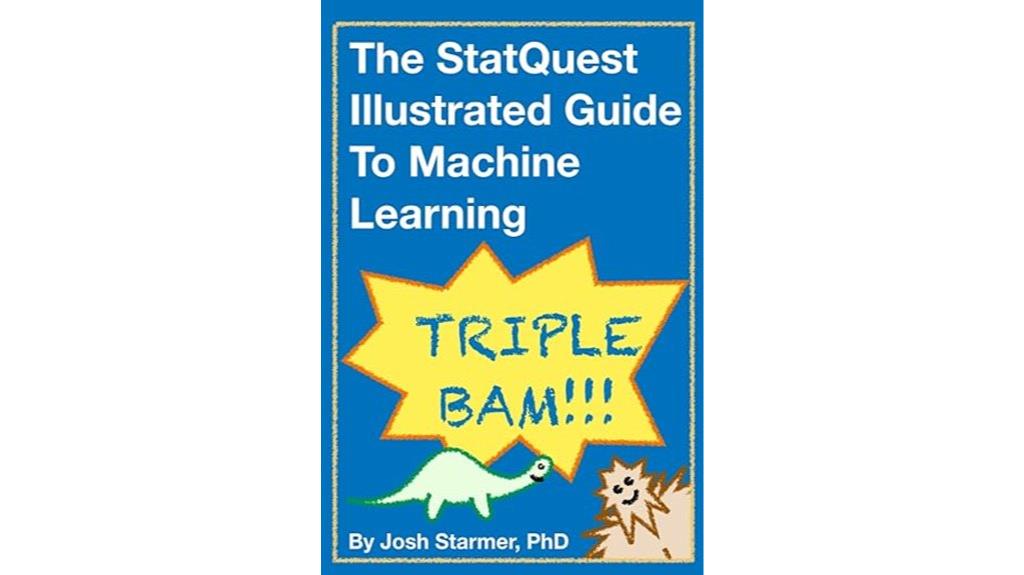
The StatQuest Illustrated Guide to Machine Learning stands out as an ideal resource for beginners and visual learners seeking a straightforward, engaging introduction to ML concepts. I find its clear illustrations and minimal jargon make complex ideas accessible without sacrificing accuracy. Joshua’s approach emphasizes visual storytelling, which helps me grasp algorithms and data flow naturally. It’s more engaging than traditional textbooks, making learning fun and less intimidating. Whether you’re new or want a refresher, this book simplifies core concepts with diagrams and arrows, reinforcing understanding through visuals. I highly recommend it as a practical, approachable way to build a solid foundation in machine learning.
Best For: beginners and visual learners seeking an engaging, straightforward introduction to machine learning concepts that are easy to understand and visually explained.
Pros:
- Accessible and beginner-friendly style with clear illustrations and minimal jargon
- Visual storytelling techniques that make complex concepts intuitive and engaging
- Highly effective for reinforcing understanding and building confidence in ML fundamentals
Cons:
- May lack in-depth technical details for advanced practitioners
- Some readers might prefer more comprehensive or textbook-style explanations
- Limited focus on hands-on coding or implementation examples
Factors to Consider When Choosing a Machine Learning Book

When selecting a machine learning book, I consider factors like content depth, target audience, and how much practical application it offers. I also look at the level of mathematical rigor and whether the book uses visuals or illustrations to clarify concepts. These points help me find a resource that matches my learning style and goals.
Content Depth and Approach
Choosing a machine learning book hinges on evaluating how well its content depth and approach align with your learning style and goals. I look for a balance between theory and practical examples that makes concepts understandable and applicable. If you’re a beginner, confirm the content matches your current knowledge level, whether introductory or advanced. Consider if the approach is conceptual, intuitive, or mathematically rigorous, matching your preferred learning style. Visual aids, code snippets, and real-world case studies can considerably enhance comprehension, so I check if these are included. Finally, I verify that the coverage is thorough enough to meet my goals, whether I want foundational knowledge or specialized skills. This careful assessment helps me find a book that truly supports my growth in machine learning.
Target Audience Compatibility
Selecting the right machine learning book starts with ensuring its target audience matches your current skill level and background. You want a book that aligns with your understanding of math and core concepts, so you’re neither overwhelmed nor bored. Check if it’s aimed at beginners, intermediates, or advanced practitioners, and pick accordingly. Also, consider whether you’re after practical coding tips or theoretical insights, as some books emphasize hands-on applications while others focus on principles. Think about your preferred learning environment—self-study, classroom, or reference—and choose a book designed for that setting. Finally, review the language style and instructional approach to see if it resonates with how you learn best, whether visually, narratively, or through formal explanations.
Practical Application Focus
Focusing on practical application can substantially enhance your learning experience by connecting theory to real-world problems. When choosing a machine learning book, prioritize those that include case studies, hands-on exercises, and code snippets that let you directly implement algorithms on relevant datasets. Such books often explore deployment, scalability, and system integration, preparing you for production environments. They typically organize content around practical challenges, offering tips on feature engineering, model tuning, and troubleshooting in scenarios across industries like healthcare, finance, and marketing. This approach helps solidify your understanding by applying concepts to tangible problems, making learning more engaging and relevant. Ultimately, a practical focus guarantees you’re not just learning theory but gaining skills you can immediately use in real-world projects.
Mathematical Rigor Level
Understanding the level of mathematical rigor in a machine learning book is essential because it shapes how deeply you’ll grasp core concepts like linear algebra, calculus, and probability. High-rigor books include detailed proofs, derivations, and formal definitions, perfect if you want a solid theoretical foundation. They help you understand algorithms at a fundamental level, which is crucial for research or advanced work. On the other hand, lower-rigor books focus on intuition, practical applications, and simplified explanations, making them accessible for beginners or those more interested in implementation. The right rigor level depends on your background and goals. Striking a balance ensures you develop both conceptual understanding and practical skills, enabling you to build, troubleshoot, and innovate with machine learning models effectively.
Visual and Illustrative Aids
Visual and illustrative aids play a essential role in making complex machine learning concepts more accessible, especially for learners at different skill levels. Well-designed diagrams, flowcharts, and color-coded graphics clarify intricate algorithms and data flows, making abstract ideas easier to grasp. These visuals enhance understanding and retention by providing intuitive representations of model architecture, decision boundaries, and variable relationships. They also help illustrate how changes in parameters impact outcomes, which is indispensable for practical learning. Choosing a book with high-quality visuals can make studying more engaging and reduce cognitive load when tackling difficult topics. Ultimately, effective visual aids serve as powerful tools that bridge gaps in understanding, making the learning process smoother and more enjoyable for beginners and advanced learners alike.
Frequently Asked Questions
Which Books Are Best for Beginners in Machine Learning?
If you’re starting out in machine learning, I recommend focusing on books that are clear and beginner-friendly. I suggest “Hands-On Machine Learning with Scikit-Learn, Keras, and TensorFlow” by Aurélien Géron because it offers practical examples and easy explanations. Another great choice is “Python Machine Learning” by Sebastian Raschka, which covers fundamentals with accessible language. These books will build your confidence and provide a solid foundation to grow from.
How Do I Choose a Book for Advanced AI Topics?
I understand choosing an advanced AI book can seem overwhelming, but it’s manageable if you focus on your goals. Start by identifying specific topics like deep learning or reinforcement learning that interest you most. Look for books authored by reputable researchers, and check reviews to ensure clarity and depth. Don’t hesitate to delve into technical papers alongside; they complement book learning and deepen your understanding.
Are There Specific Books Focused on Ethical AI Development?
You’re asking about books focused on ethical AI development. I recommend starting with “Ethics of Artificial Intelligence and Robotics” by Vincent C. Müller, which offers thorough insights. “Building Ethical AI” by Brent Daniel Mittelstadt is also great. These books cover key issues like bias, fairness, and transparency, helping you develop responsible AI. I’ve found them invaluable for understanding how to create ethical, trustworthy AI systems.
Which Resources Cover Real-World Machine Learning Project Implementation?
Did you know that over 60% of machine learning projects fail due to poor implementation? When it comes to real-world project execution, I recommend checking out resources like “Hands-On Machine Learning with Scikit-Learn, Keras, and TensorFlow” by Aurélien Géron. It offers practical examples and step-by-step guidance that help you turn theory into actionable results, making complex concepts approachable and applicable to your projects.
How Can I Stay Updated With the Latest Machine Learning Trends?
To stay updated with the latest machine learning trends, I regularly follow industry blogs, research papers, and attend conferences or webinars. I also participate in online communities like GitHub, Reddit, and LinkedIn groups where professionals share insights. Subscribing to newsletters from leading AI organizations keeps me informed about new breakthroughs. Continuously experimenting with new tools and frameworks helps me stay hands-on and current in this rapidly evolving field.
Conclusion
Diving into these books feels like opening different doors to the vast castle of machine learning. Each one offers a unique key—whether it’s mastering math, exploring ethics, or understanding AI’s future. As you turn these pages, you’ll build a sturdy bridge from curiosity to expertise. So, pick the one that speaks to your journey and step confidently across into a future where your skills can truly shine.









